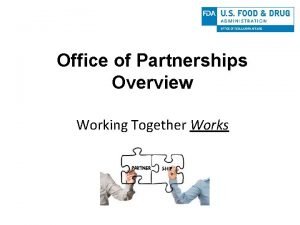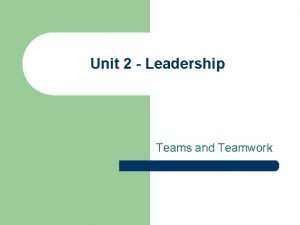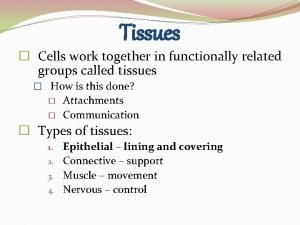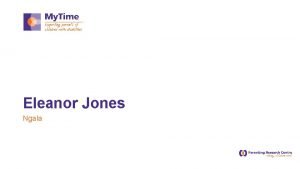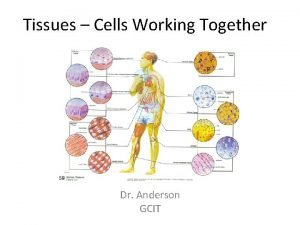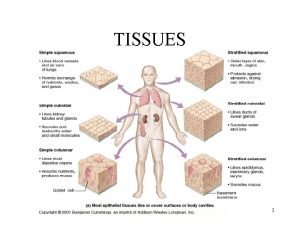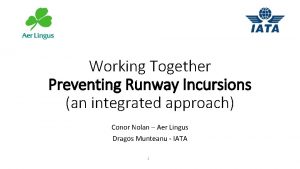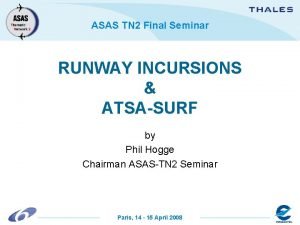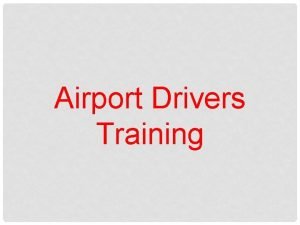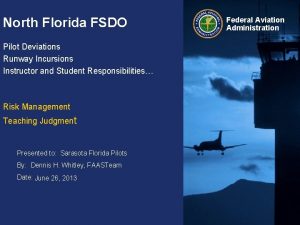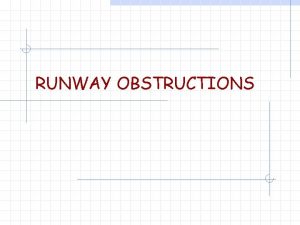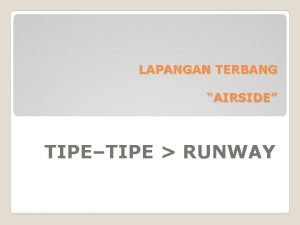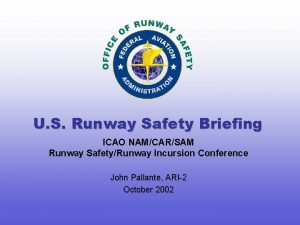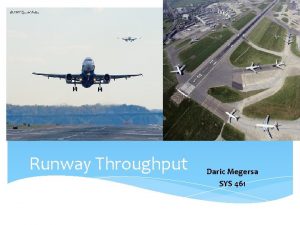Working Together Preventing Runway Incursions an integrated approach
















- Slides: 16

Working Together Preventing Runway Incursions (an integrated approach) Conor Nolan – Aer Lingus Dragos Munteanu - IATA 1

Runway Safety – A Common Approach? 2

Runway incursion: 5 Years Rate Total STEADES Database. RWY Incursion (Q 1 2012 -Q 4 2016) Total STEADES Database (Q 1 2012 -Q 4 2016) Number of reports 1, 971 reports 952, 031 reports Rate* 0. 038 reports per 1, 000 flights 18 reports per 1, 000 flights Frequency 1 reports per 26, 507 flights 1 reports per day 1 reports per 55 flights 522 reports per day STEADES Analysis – Runway Incursion 3 *Sectors are based on IATA SRS (Schedule Reference Service) Database. STEADES flights represent 36 percent of global SRS flights. The above rate represents the lower measure of the true number of such events that are occurring, due to the different reporting cultures of members, as such the true number of events occurring could be higher. Copyright © 2017 International Air Transport Association. All rights reserved. Subject to restrictions and disclaimer.

Runway incursion: Global Yearly Distribution ä This graph shows the yearly distribution of the total number of reports (1, 971) for the period 2012 Q 1 to 2016 Q 4 inclusive. ä 2013 had the highest rate with 0. 045 reports per 1, 000 STEADES flights. ä The lowest rate was for 2016 with 0. 029 reports per 1, 000 STEADES flights. *Sectors are based on IATA SRS (Schedule Reference Service) Database. STEADES Analysis – Runway Incursion 4 Copyright © 2017 International Air Transport Association. All rights reserved. Subject to restrictions and disclaimer

Runway incursion: Region of Occurrence ä 90% (1, 781) of reports contained information regarding the region of occurrence ä For these reports, the regions with the highest number of occurrences were NAM (41%) and EUR (35%). STEADES Analysis – Runway Incursion 5 Copyright © 2017 International Air Transport Association. All rights reserved. Subject to restrictions and disclaimer

Runway incursion: Map Distribution ä The map shows the airport of occurrence distribution for the reports which contained this information (90%, 1, 781 reports) STEADES Analysis – Runway Incursion 6 Copyright © 2017 International Air Transport Association. All rights reserved. Subject to restrictions and disclaimer

Runway incursion: Region of Operator ä NAM operators had the highest number of reports with 863 reports. This represented 44% of the total number of reports (1, 971). ä The second position in the ranking was for EUR operators with 35% (689 reports). STEADES Analysis – Runway Incursion 7 Copyright © 2017 International Air Transport Association. All rights reserved. Subject to restrictions and disclaimer

Runway incursion: Yearly Distribution - EUR ä This graph shows the yearly distribution of the reports with EUR as a region of occurrence (626 reports). ä 2014 had the highest rate with 0. 058 reports per 1, 000 STEADES flights. ä The lowest rate was for 2012 with 0. 028 reports per 1, 000 STEADES flights. *Sectors are based on IATA SRS (Schedule Reference Service) Database. STEADES Analysis – Runway Incursion 8 Copyright © 2017 International Air Transport Association. All rights reserved. Subject to restrictions and disclaimer

Sample STEADES narrative ä “After start sequence completed, aircraft requested taxi instructions. The received clearance was to enter and backtrack runway 32. The clearance was read back exactly as heard. The aircraft was moving taxi out and its nose landing gear has already crossed the runway holding point to enter the runway, Flight Crew heard that AFIS zzz instructed to hold on short. In the meantime, a small traffic, reported as registration XX-XXX was doing a touch and go. At that moment, both Flight Crew saw a single engine airplane already occupying the runway in front of aircraft. The traffic made a touch and go and avoided collision by only a few meters. ” 9

Runway incursions – still a “hot” topic? • Is past performance a guarantee for the future? • Constant update and improvement of all involved actor’s Safety Management Systems is necessary with the aim of identifying conditions leading to potential runway incursions. • The actors must collaborate to integrate their safety systems and activities relating to the runway environment considering the high number of parties involved: Aircrew, ATC, Ground vehicles of different types. • Sharing of safety information is vital in order to identify and react to safety concerns. • Harmonization of procedures and practices at the global level is a necessity to ensure safe runway operations 10

Identification - Preventing Runway Incursions? • Hazard Identification and Risk Analysis • • Landing and vacating Taxi in – crossing runways Taxi-out – crossing runways Use of runways as taxiways Red-stop bar protocols Low vis Procedures Runway vehicle ops, construction Airport specific – hot-spots, language, non-standard markings/signs • SOPs – Effectiveness, Best Practice • Local Runway Safety Teams – Risk Knowledge

Collaboration - Reducing RI risk • • • Low Frequency but High Severity – High Risk Most Credible Outcome – Catastrophic Effectiveness of Barriers - ? Low number of accidents compared to other accident types – Data poor Collaborative approach to further reduce the frequency of runway incursions • • Involve all stakeholders Identify hazards Document mitigations Promote best practice – IOSA Standards Share information and experience Ensure message is heard Monitor effectiveness 12

Integration – LRST Best Practice • • NAA Sponsored Airport Authority Coordination Aircraft Operator Support Airport User Participate Safety Information Exchange Shared Definitions, Metrics Action Plans 13

Harmonization - Promoting Best Practice (EAPPRI) • Pre-flight briefing • Airport knowledge, normal parking, normal taxiroute, hot-spots • PA complete prior to push back • Taxi clearance • Shared plan, clear route understanding • Task sharing, heads in/out • No PA, minimal cabin comms (use of ECAM Cabin Ready) • Use of lights as aide-memoir • Taxi-phase • Progressive confirmation, next turn, agreed between crew, use of charts • Healthy doubt, appropriate clarification • See and avoid, trust no-one • Approaching any runway • • • 14 Intersection confirmation Red stop bar protocol Use of lights, strobes, TCAS Clearance heard, confirmed (both pilots) and readback Visual check Runway identification, alignment, cross wind, crossing traffic

Conclusions • Sharing of data is vital – Mo. Rs, Eurocontrol, ICAO, IATA (STEADES, HITF) etc. • Working together with all the affected stakeholders – Runway Safety Teams, integration of SMSs • Adoption and usage of international best practices • Training and awareness 15

For information on this or any other GADM analysis products, please e-mail us at: gadm@iata. org
 Final approach runway occupancy signal
Final approach runway occupancy signal Differentiate between hot working and cold working
Differentiate between hot working and cold working Hard work vs smart work presentation
Hard work vs smart work presentation Pembentukan plat pada pengerjaan panas
Pembentukan plat pada pengerjaan panas Cold working advantages
Cold working advantages Hot working and cold working difference
Hot working and cold working difference Tissues are groups of similar cells working together to
Tissues are groups of similar cells working together to Working together works
Working together works Words of wisdom about working together
Words of wisdom about working together Group cohesiveness and performance
Group cohesiveness and performance Working together for change
Working together for change Udai working together works
Udai working together works Group of cells working together
Group of cells working together Working together agreement
Working together agreement Working together to achieve a common goal
Working together to achieve a common goal Tissues working together
Tissues working together Tissues are groups of similar cells working together to
Tissues are groups of similar cells working together to







